Airthings View Plus review: Diagnose air quality problems, easily
Keep tabs on the air quality of your home -- including potentially deadly radon levels -- with the Airthings View Plus.
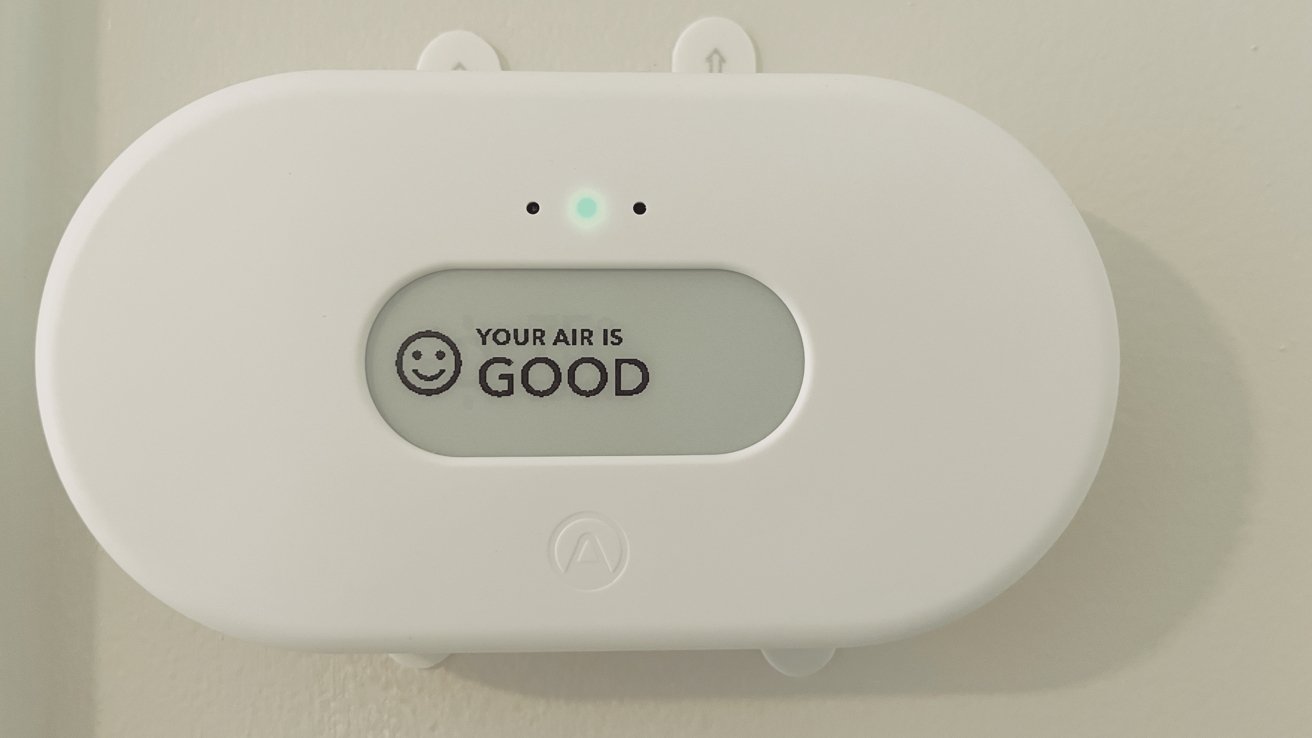
Indoor air is often pretty highly polluted. The EPA notes that, on average, indoor air pollutants are two to five times higher than outdoor levels. However, in some cases, they can be much higher -- up to 100 times more.
Because we spend so much time indoors, it's a good idea to know how your indoor air stacks up. The Airthings View Plus is one handy device designed to do just that.
Temperature and humidity play a substantial role in air quality in several ways. Air that is too dry can cause excessive drying in the bronchial tubes, lungs, and sinuses, leading to shortness of breath. On the other hand, air that is too moist contains less oxygen than cool air, which can adversely affect those with COPD, allergies, and asthma.
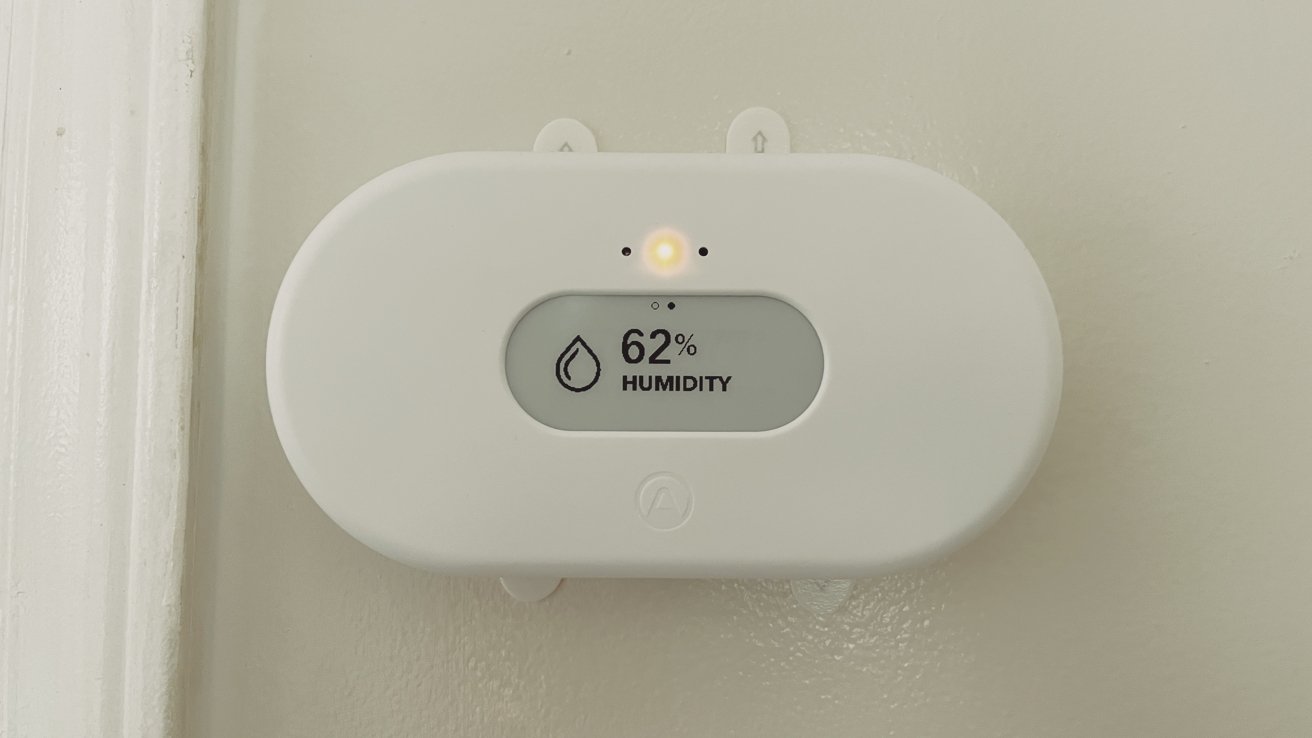
Airthings View Plus alerting the user that the humidity is higher than advised
When it's too hot or too cold can irritate the airway, which can be dangerous for children, the elderly, pets, or those with chronic breathing issues.
Radon is a radioactive gas present in soil, rocks, and groundwater. It forms naturally when radioactive metals break down over time. It's present in nearly every home but tends to be more concentrated in homes with basements, or in areas with large granite deposits.
And, Radon is especially worrisome because it is the second leading cause of lung cancer after smoking.
Particulate matter is any microscopic solids or liquids that can be inhaled. This often includes pollen, dust, smoke, vehicle emissions, mold spores, and even viral and bacterial particles.
The National Ambient Air Quality Standards (NAAQS) notes that PM 2.5 -- particles that are 2.5 microns across or smaller -- are particularly troublesome. These are small enough to be inhaled and passed into the bloodstream.
Carbon dioxide is generally considered a harmless gas in certain quantities but can be problematic at higher concentrations. Too much carbon dioxide can lead to headaches and fatigue. Consistent readings of over 1100 parts per million (ppm) can indicate home ventilation problems.
According to the EPA, volatile organic compounds are gases emitted from certain solids and liquids. VOCs are found in significantly higher concentrations indoors than outdoors. Common sources of VOCs are paint, varnish, glue, cleaning products, and even things like the foam inside your furniture.
Certain VOCs have been linked to migraine headaches and asthma flare-ups, and some -- like benzene and formaldehyde -- can even be carcinogenic.
When air pressure is high, typically, air circulation tends to be somewhat stagnant. This can lead to a buildup of both indoor and outdoor air pollutants. Changes in air pressure have also been linked to the expansion and contraction of ligaments, tendons, and cartilage, which can cause joint pain for those with arthritis.
Importantly, though, the Airthings View Plus does not monitor carbon monoxide or smoke. You should still have both smoke detectors and carbon monoxide detectors placed in appropriate areas in your home.
It runs on six AA batteries but can also be powered via USB. If you choose to power it via USB, it can be used as a hub with other Airthings products.
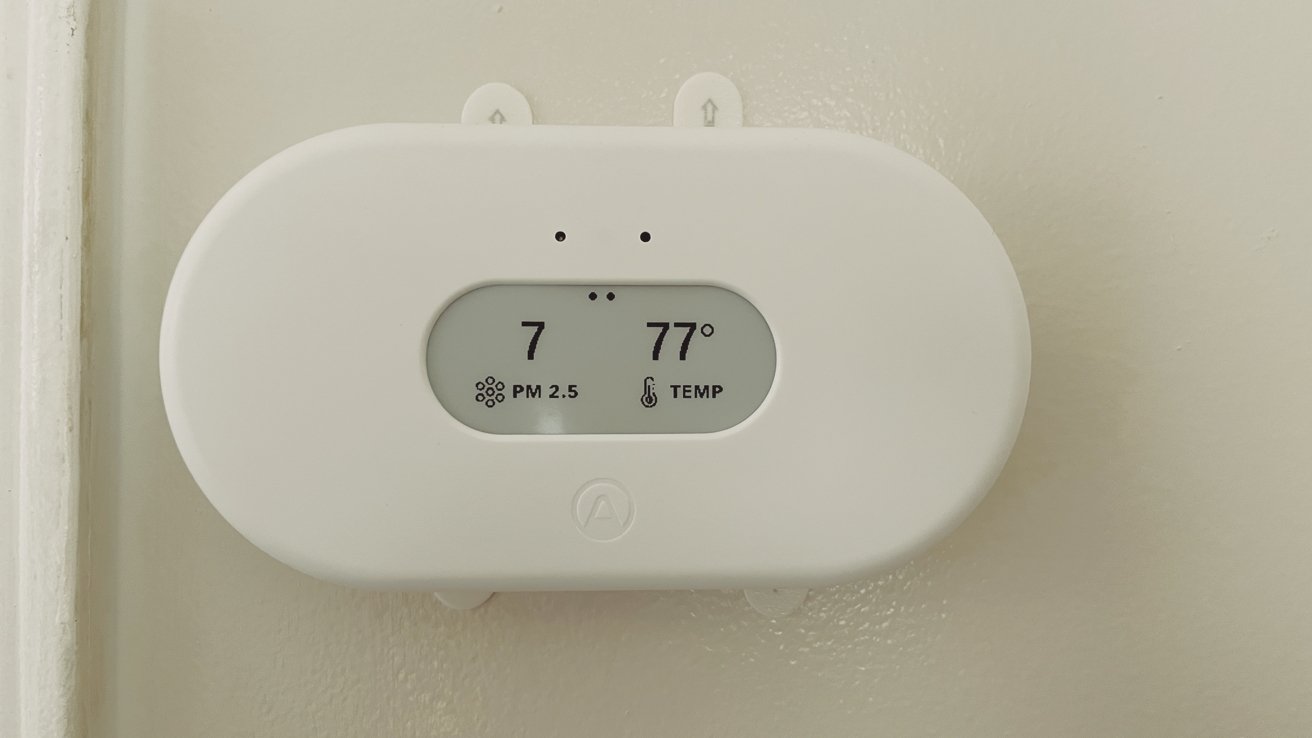
You can choose which metrics are always displayed on the Airthings View Plus
On the front of the View Plus is a 2.9-inch ePaper display, used to show up to two of your preferred metrics.
Waving your hand in front of the View Plus will give you quick feedback on any areas of concern. For example, if your indoor air quality is good, it will display a smiley face and green light and read, "your air is good."
If your air quality readings dip outside the ranges that Airthings deems acceptable, it will display a yellow light for fair air quality or red light for poor air quality. It will also display the readings that may need to be addressed.
Overall, the design is decent. It's unobtrusive enough to blend into your home like thermostats and carbon monoxide detectors do. It's easy enough to use and provides some handy feedback.
Of course, one drawback to the ePaper display is that it's nearly impossible to read in dim lighting. However, that's the tradeoff for extended battery life, as the ePaper display uses significantly less energy than others.
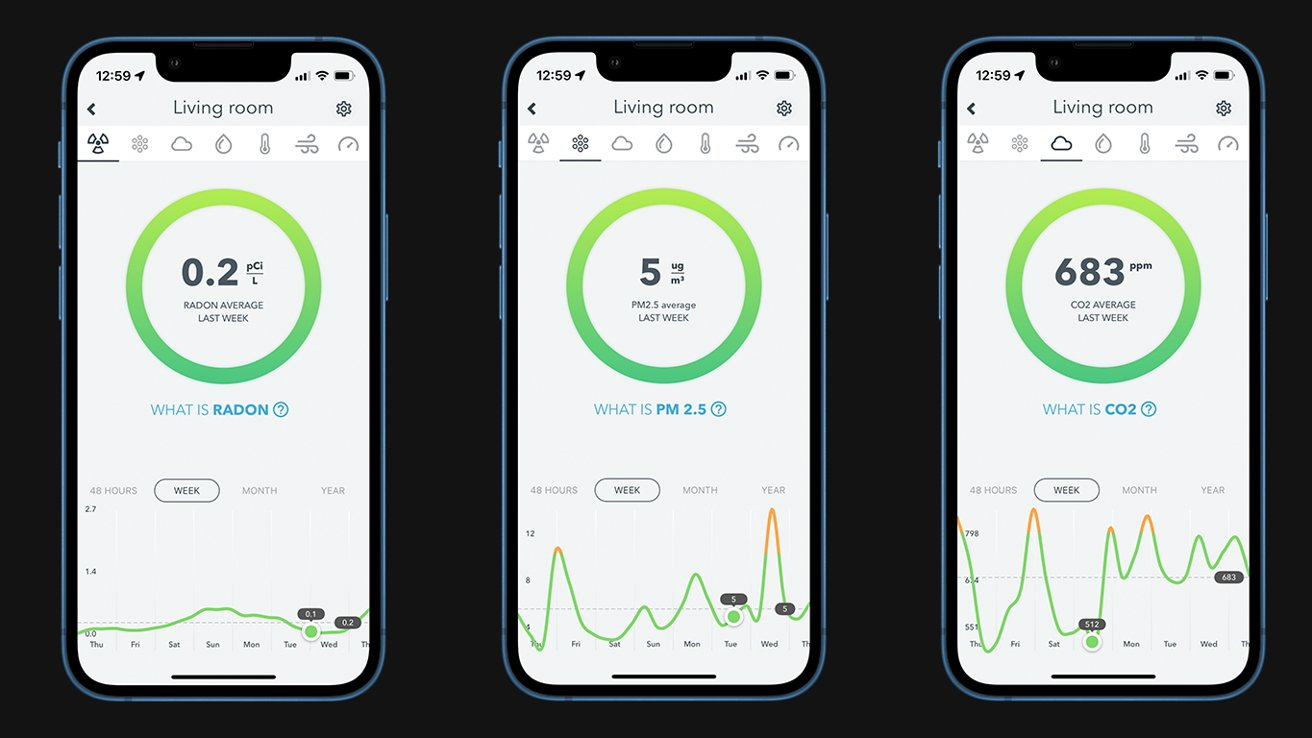
Weekly readings for carbon dioxide, particulate matter, and carbon dioxide levels
The app also allows you to pick one or two always-on metrics. You can also set up alerts that will tell you to take action when any air quality metric exceeds the requirement for poor air quality.
We like the Airthings app -- it's straightforward, and the ability to see where potential problems may lie is extremely useful.
This is very, very important -- and something we somehow missed the first day we had it.
The first night it informed us that we had a CO2 result of more than 1200 parts per million. The Airthings unit quickly told us was above what it claims is the safe limit.
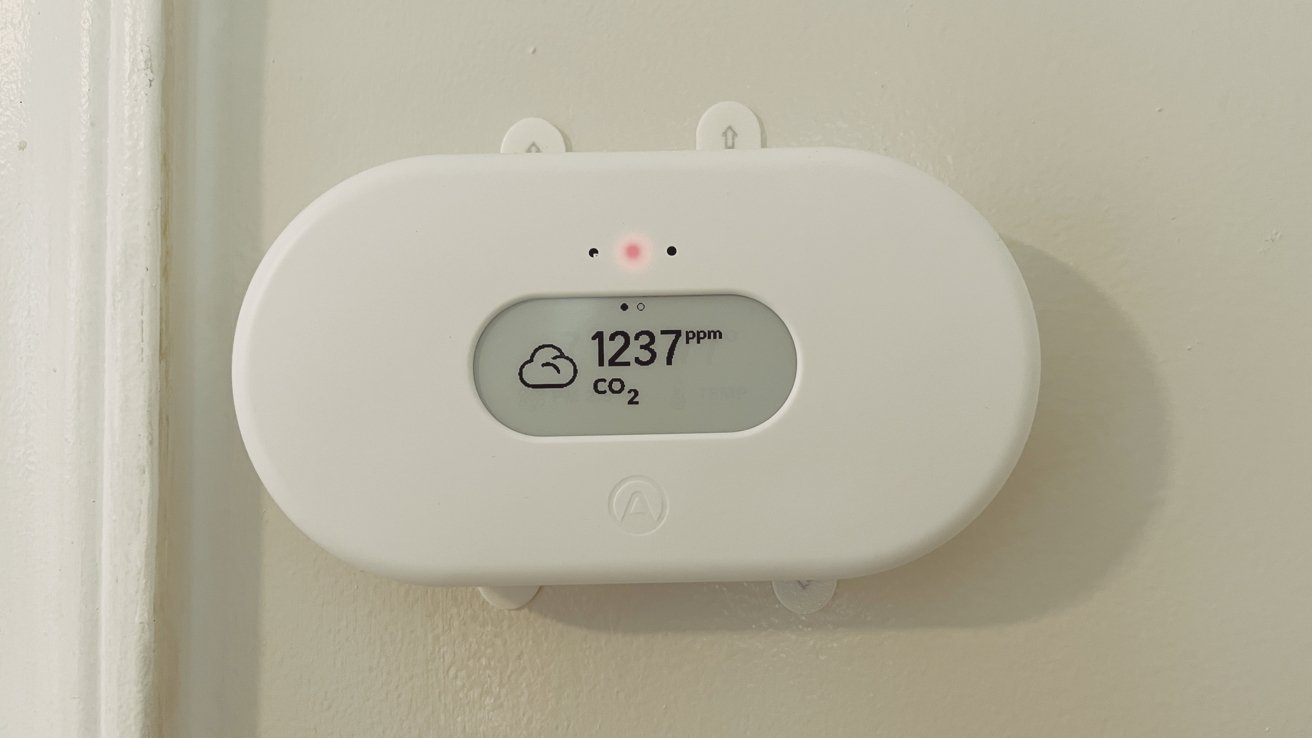
The calibration period is critical -- you should expect some very high readings during this period
However, after a few days, it revised the reading to only 900ppm, a reduction of more than 300ppm -- statistically significant.
As it turns out, this is precisely how the Airthings is supposed to work. It takes a while to get the feel of your space, so you shouldn't take your VOC or CO2 readings seriously until after the calibration period. The VOC and CO2 sensors require a calibration period of seven days but continue to get more accurate over time.
For certain things, like temperature and particulate matter, Airthings says its meters are immediately reliable. The radon sensor is not considered accurate for a minimum of 30 days but should not be regarded as diagnostic until three months.
Allergy sufferers can use its particulate matter sensors to monitor PM 2.5 triggers like dust, smoke, and pollen.
Those with older homes with full or partial basements can benefit from using it to monitor their home's radon levels. This is especially critical as radon levels are highly influenced by humidity, air pressure, and temperature. Getting your home tested once every few years may not be enough to catch dangerous radon spikes.
Rating: 4 out of 5
If you'd like to include a secondary monitor, Amazon sells a bundle that consists of the Airthings View Plus and the Airthings Wave Mini for $376.55
Read on AppleInsider

Indoor air is often pretty highly polluted. The EPA notes that, on average, indoor air pollutants are two to five times higher than outdoor levels. However, in some cases, they can be much higher -- up to 100 times more.
Because we spend so much time indoors, it's a good idea to know how your indoor air stacks up. The Airthings View Plus is one handy device designed to do just that.
What the Airthings View Plus measures and why it measures it
The Airthings View Plus can measure seven different aspects of your air quality, including temperature, humidity, radon, particulate matter 2.5 (PM 2.5), carbon dioxide (CO2), volatile organic compounds (VOCs), and air pressure.Temperature and humidity play a substantial role in air quality in several ways. Air that is too dry can cause excessive drying in the bronchial tubes, lungs, and sinuses, leading to shortness of breath. On the other hand, air that is too moist contains less oxygen than cool air, which can adversely affect those with COPD, allergies, and asthma.

Airthings View Plus alerting the user that the humidity is higher than advised
When it's too hot or too cold can irritate the airway, which can be dangerous for children, the elderly, pets, or those with chronic breathing issues.
Radon is a radioactive gas present in soil, rocks, and groundwater. It forms naturally when radioactive metals break down over time. It's present in nearly every home but tends to be more concentrated in homes with basements, or in areas with large granite deposits.
And, Radon is especially worrisome because it is the second leading cause of lung cancer after smoking.
Particulate matter is any microscopic solids or liquids that can be inhaled. This often includes pollen, dust, smoke, vehicle emissions, mold spores, and even viral and bacterial particles.
The National Ambient Air Quality Standards (NAAQS) notes that PM 2.5 -- particles that are 2.5 microns across or smaller -- are particularly troublesome. These are small enough to be inhaled and passed into the bloodstream.
Carbon dioxide is generally considered a harmless gas in certain quantities but can be problematic at higher concentrations. Too much carbon dioxide can lead to headaches and fatigue. Consistent readings of over 1100 parts per million (ppm) can indicate home ventilation problems.
According to the EPA, volatile organic compounds are gases emitted from certain solids and liquids. VOCs are found in significantly higher concentrations indoors than outdoors. Common sources of VOCs are paint, varnish, glue, cleaning products, and even things like the foam inside your furniture.
Certain VOCs have been linked to migraine headaches and asthma flare-ups, and some -- like benzene and formaldehyde -- can even be carcinogenic.
When air pressure is high, typically, air circulation tends to be somewhat stagnant. This can lead to a buildup of both indoor and outdoor air pollutants. Changes in air pressure have also been linked to the expansion and contraction of ligaments, tendons, and cartilage, which can cause joint pain for those with arthritis.
Importantly, though, the Airthings View Plus does not monitor carbon monoxide or smoke. You should still have both smoke detectors and carbon monoxide detectors placed in appropriate areas in your home.
Airthings View Plus - Design
The Airthings View Plus looks like many digital thermostats or carbon monoxide detectors. It can be set on a table or mounted to your wall via 3M Command Strips (included) or with screws (also included.)It runs on six AA batteries but can also be powered via USB. If you choose to power it via USB, it can be used as a hub with other Airthings products.

You can choose which metrics are always displayed on the Airthings View Plus
On the front of the View Plus is a 2.9-inch ePaper display, used to show up to two of your preferred metrics.
Waving your hand in front of the View Plus will give you quick feedback on any areas of concern. For example, if your indoor air quality is good, it will display a smiley face and green light and read, "your air is good."
If your air quality readings dip outside the ranges that Airthings deems acceptable, it will display a yellow light for fair air quality or red light for poor air quality. It will also display the readings that may need to be addressed.
Overall, the design is decent. It's unobtrusive enough to blend into your home like thermostats and carbon monoxide detectors do. It's easy enough to use and provides some handy feedback.
Of course, one drawback to the ePaper display is that it's nearly impossible to read in dim lighting. However, that's the tradeoff for extended battery life, as the ePaper display uses significantly less energy than others.
Airthings View Plus - The app
While the display is nice, the real reason Airthings is valuable is because of the Airthings app. After you pair your Airthings with your home WiFi network, the Airthings app records the data from your Airthings devices and charts it over time.
Weekly readings for carbon dioxide, particulate matter, and carbon dioxide levels
The app also allows you to pick one or two always-on metrics. You can also set up alerts that will tell you to take action when any air quality metric exceeds the requirement for poor air quality.
We like the Airthings app -- it's straightforward, and the ability to see where potential problems may lie is extremely useful.
Wait for it to calibrate
Airthings warns that the first seven days you use the Airthings View Plus should be considered the calibration period. During this period, the VOC and CO2 sensors need to take some time to adjust to the space it's measuring.This is very, very important -- and something we somehow missed the first day we had it.
The first night it informed us that we had a CO2 result of more than 1200 parts per million. The Airthings unit quickly told us was above what it claims is the safe limit.

The calibration period is critical -- you should expect some very high readings during this period
However, after a few days, it revised the reading to only 900ppm, a reduction of more than 300ppm -- statistically significant.
As it turns out, this is precisely how the Airthings is supposed to work. It takes a while to get the feel of your space, so you shouldn't take your VOC or CO2 readings seriously until after the calibration period. The VOC and CO2 sensors require a calibration period of seven days but continue to get more accurate over time.
For certain things, like temperature and particulate matter, Airthings says its meters are immediately reliable. The radon sensor is not considered accurate for a minimum of 30 days but should not be regarded as diagnostic until three months.
Who should buy the Airthings View Plus
If you're sensitive to many common asthma triggers, the Airthings View Plus is a handy tool in your back pocket. For example, it can help you determine if your space has an issue with VOCs or if your humidity may need to be increased or decreased.Allergy sufferers can use its particulate matter sensors to monitor PM 2.5 triggers like dust, smoke, and pollen.
Those with older homes with full or partial basements can benefit from using it to monitor their home's radon levels. This is especially critical as radon levels are highly influenced by humidity, air pressure, and temperature. Getting your home tested once every few years may not be enough to catch dangerous radon spikes.
Rating: 4 out of 5
Airthings View Plus pros
- Monitors seven different air quality factors
- App is easy to use
- Can act as hub for other Airthings devices
Airthings View Plus cons
- ePaper display can be difficult to read
- Price is a little steep
- No HomeKit support
- Cannot set your own alert levels
Where to buy the Airthings View Plus
Those interested can snag an Airthings View Plus from Amazon for $299.If you'd like to include a secondary monitor, Amazon sells a bundle that consists of the Airthings View Plus and the Airthings Wave Mini for $376.55
Read on AppleInsider

Comments
The fact that the CO2 sensor adjusted itself over the first few days smells like the VW diesel engine emissions scandal. (Pun entirely accidental.)
https://www.co2meter.com/blogs/news/7512282-co2-sensor-calibration-what-you-need-to-know
Thanks for linking such an informative article which raises the same concerns that I did.
Aqara Indoor Air Quality Monitor, Requires AQARA HUB, Pollution Meter for TVOC, Temperature and Humidity with a High-Contrast E Ink Screen, Supports HomeKit, Google, Alexa and IFTTT: AmazonSmile: Industrial & Scientific